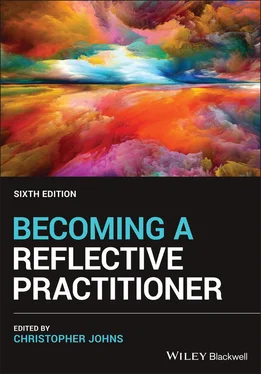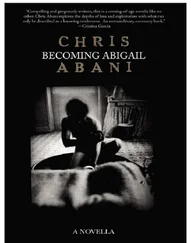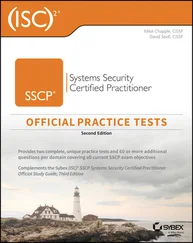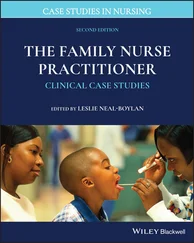Becoming a Reflective Practitioner
Здесь есть возможность читать онлайн «Becoming a Reflective Practitioner» — ознакомительный отрывок электронной книги совершенно бесплатно, а после прочтения отрывка купить полную версию. В некоторых случаях можно слушать аудио, скачать через торрент в формате fb2 и присутствует краткое содержание. Жанр: unrecognised, на английском языке. Описание произведения, (предисловие) а так же отзывы посетителей доступны на портале библиотеки ЛибКат.
- Название:Becoming a Reflective Practitioner
- Автор:
- Жанр:
- Год:неизвестен
- ISBN:нет данных
- Рейтинг книги:5 / 5. Голосов: 1
-
Избранное:Добавить в избранное
- Отзывы:
-
Ваша оценка:
- 100
- 1
- 2
- 3
- 4
- 5
Becoming a Reflective Practitioner: краткое содержание, описание и аннотация
Предлагаем к чтению аннотацию, описание, краткое содержание или предисловие (зависит от того, что написал сам автор книги «Becoming a Reflective Practitioner»). Если вы не нашли необходимую информацию о книге — напишите в комментариях, мы постараемся отыскать её.
Becoming a Reflective Practitioner
Becoming a Reflective Practitioner
Becoming a Reflective Practitioner — читать онлайн ознакомительный отрывок
Ниже представлен текст книги, разбитый по страницам. Система сохранения места последней прочитанной страницы, позволяет с удобством читать онлайн бесплатно книгу «Becoming a Reflective Practitioner», без необходимости каждый раз заново искать на чём Вы остановились. Поставьте закладку, и сможете в любой момент перейти на страницу, на которой закончили чтение.
Интервал:
Закладка:
In Chapter 4, I consider how the model for structured reflection can scaffold the process. Writing self is just a question of doing it. Do it your own style, whatever works best for you. So,
Think of the last time you were at work. Now think about one particular situation. It needn’t be dramatic. It can simply be something mundane or ordinary, perhaps something you wouldn’t normally give a second thought.
First, relax and bring your mind home. Now write a description of this situation for 15–20 minutes. Do not take your pen off the paper. Do not stop and think about the why’s of the situation. Just let the pen or keyboard flow spontaneously, in the rich graphic description, paying attention to detail, drawing on all your senses. Capture actual dialogue spoken. Just write.
After you finish writing, pause and stand back. Read what you have written with an open and curious mind. Ask yourself – ‘what is significant in what I have written?’ Responding to this question, you enter the reflective spiral.
Note
1 1.See also De Salvo (1999) for a summary of Pennebaker’s work.
References
1 1. Atkins, S and Murphy, K. (1993) Reflective practice. Nursing Standard 9(45) 31–37.
2 2. Beck, CY (1989) Everyday Zen. Thorsons, London.
3 3. Boud, D, Keogh, R and Walker, D (1985) Promoting reflection in learning: a model. In Reflection: Turning Experience into Learning. D. Boud, R. Keogh and D. Walker (Eds.) Kogan Page, London, 18–40.
4 4. Boyd, E and Fales, A (1983) Reflective learning: key to learning from experience. Journal of Humanistic Psychology 23.2; 99–117.
5 5. Brooks, S. (2004). Becoming a transformational leader. Unpublished Masters in Leadership dissertation. University of Bedfordshire.
6 6. Chodron P (2000) When Things Fall Apart. Shambhala, Boston.
7 7. Coleman D & Willis D S (2015) Reflective writing; the student nurse’s perspective on reflective writing and poetry writing. Nurse Education Today, 35(7):906–911.
8 8. De Salvo L (1999) Writing as a Way of Healing: How Telling Our Stories Transforms Our Lives. The Women’s Press, London.
9 9. Ferruci P (1982) What We May Be. St. Martin’s Press, New York.
10 10. Gray G. & Forsstrom S. (1991) Generating theory from practice: the reflective technique. In G. Gray and R. Pratt (Eds.) Towards a Discipline of Nursing Churchill Livingstone. Melbourne, pp. 355–372.
11 11. Gully E (2005) Creating sacred space: a journey to the soul. In C. Johns & D. Freshwater (Eds.) Transforming Nursing Through Reflective Practice (2nd edition). Blackwell Publishing, Oxford.
12 12. Heath H and Freshwater D (2000) Clinical supervision as an emancipatory process avoding inappropriate intent. Journal of Advanced Nursing 32: 1298–1306.
13 13. Holly, M L (1989) Reflective writing and the spirit of inquiry. Cambridge Journal of Education 19.1; 71–80.
14 14. Johns, C. (1997). Implementing clinical supervision [guided reflection] within an NHS Trust: Study 1. Unpublished Rep. Centre for Reflective Practice, Institute for Health Services Research, University of Luton.
15 15. Jourard S. (1971) The Transparent Self. Van Nostrand, Newark.
16 16. Manjusvara (2005) Writing Your Way. Windhorse, Birmingham.
17 17. Moon J (2002) Reflection in Learning and Professional Development: Theory and Practice. Routledge, London.
18 18. Paramananda (2001) A Deeper Beauty: Buddhist Reflections on Everyday Life. Windhorse, Birmingham.
19 19. Pennebaker, J (1989) Confession, inhibition and disease. Advances in Experimental Social Psychology 22:211–244.
20 20. Pennebaker J (1990) Opening Up: The Healing Power of Confiding in Others. Morrow, New York.
21 21. Pennebaker, J, Colder, M and Sharp, L (1990) Accelerating the coping process. Journal of Personality and Social Psychology 58: 528–537.
22 22. Pennebaker, J, Mayne, T and Francis, M (1997) Linguistic predictors of adaptive bereavement. Journal of Personality and Social Psychology 7: 863–871.
23 23. Plath S (1975) Letters Home. Harper & Row, New York.
24 24. Remen R (1996) Kitchen Table Wisdom. Riverhead Books, New York.
25 25. Schön D (1983) The Reflective Practitioner. Avebury, Aldershot.
26 26. Smyth J., Stone A., Hurewitz A, & Kaell A. (1999) Effects of writing about stressful experiences on symptom reduction in patients with asthma or rheumatoid arthritis. Journal of the American Medical Association 281; 1304–1309.
27 27. Street, A (1995) Nursing Replay. Churchill Livingstone, Melbourne.
28 28. Tufnell M and Crickmay C (2004) A Widening Field: Journeys in Body and Imagination. Dance Books, Alton.
29 29. Wheatley MJ (1999) Leadership and the New Science: Discovering Order in a Chaotic World. Berrett‐Koehler, San Francisco.
CHAPTER 4 Engaging the Reflective Spiral: The Second Dialogical Movement
Christopher Johns
Having written a description of the experience, the practitioner moves into the second dialogical movement to reflect on the experience guided by the model for structured reflection (MSR) with the aim of learning through gaining insight.
The Model for Structured Reflection
The MSR is used worldwide, especially in healthcare professions, for example, NovelestskyRosenthal and Solomon (2001). It is designed to enable practitioners to access the depth and breadth of experience necessary to gain insight. It moves through a reflective spiral from significance to insight. Significance lies on the surface of experience, whereas insights lay deep within. Insights are learning that change the practitioner in some way towards realising their vision of practice as a reality. Insights may be expressed as ‘what I learn from reflecting on this experience?’
The first version of the MSR was constructed in 1991 through analysing the pattern of dialogue in guided reflection, framed within Strauss and Corbin’s grounded theory paradigm model (Johns 1998). Since then, it has evolved through reflection on its efficacy. Table 4.1sets out the 18th edition. It is structured through six distinct phases that mirror the six dialogical movements: preparatory and descriptive [1], reflection and drawing insight [2], deepening insights through dialogue with literature and guides [3 and 4], presentation [5], and communication [6]. For users acquainted with the previous edition note that the ‘influences grid’ has been replaced by four key questions for the practitioner to consider whether they could respond differently in future experiences. In deleting the ‘influences grid’ I reinstated specific cues for ethics, feelings, and past experiences.
The MSR cues and their sequencing are not prescriptive. However, the novice reflective practitioner will benefit from systematically applying them until they become second nature. With experience of using them, the practitioner naturally internalises them so that they become embodied and used more intuitively. The descriptive and reflection phases (first and second dialogical movements) will inevitably merge. The cues will naturally shape the practitioner’s gaze in clinical practice, nurturing the development of reflection within practice, not just after the event.
TABLE 4.1 Model for Structured Reflection (18th Edition)
Source:Christopher Johns/18 edition – December 2019.
| Preparatory phase – Bring the mind home |
| Descriptive phase – Write a description of an experience (Dialogical movement 1) |
| Reflective phase cues (Dialogical movement 2) |
| What is significant to reflect on? |
| Why did I respond as I did? |
| Did I respond in tune with my vision? |
| Did I respond effectively in terms of consequences? |
| Did my feelings and attitudes influence me? |
| Did past experiences influence me? |
| Did I respond ethically for the best? |
| Anticipatory phase – |
| Given a similar situation, how could I respond more effectively, for the best and in tune with my vision? |
| Am I able to respond as envisaged? Consider: Am I skilful and knowledgeable enough to respond differently? Am I powerful enough to respond differently? Do I have the right attitude? Am I poised enough to respond differently? |
| Insightful phase – What tentative insights do I draw from this experience? |
| Deepening insights phase |
| How has extant theory/ideas inform and deepen my insights? [Dialogical level 3] |
| How has guidance deepen my insights? ( Dialogical movement 4 ) |
| How do I now feel about the experience? |
| Representation phase (Dialogical movement 5) |
| How can I communicate my insights most effectively in written/performance format? |
The Reflective Cues
Интервал:
Закладка:
Похожие книги на «Becoming a Reflective Practitioner»
Представляем Вашему вниманию похожие книги на «Becoming a Reflective Practitioner» списком для выбора. Мы отобрали схожую по названию и смыслу литературу в надежде предоставить читателям больше вариантов отыскать новые, интересные, ещё непрочитанные произведения.
Обсуждение, отзывы о книге «Becoming a Reflective Practitioner» и просто собственные мнения читателей. Оставьте ваши комментарии, напишите, что Вы думаете о произведении, его смысле или главных героях. Укажите что конкретно понравилось, а что нет, и почему Вы так считаете.












